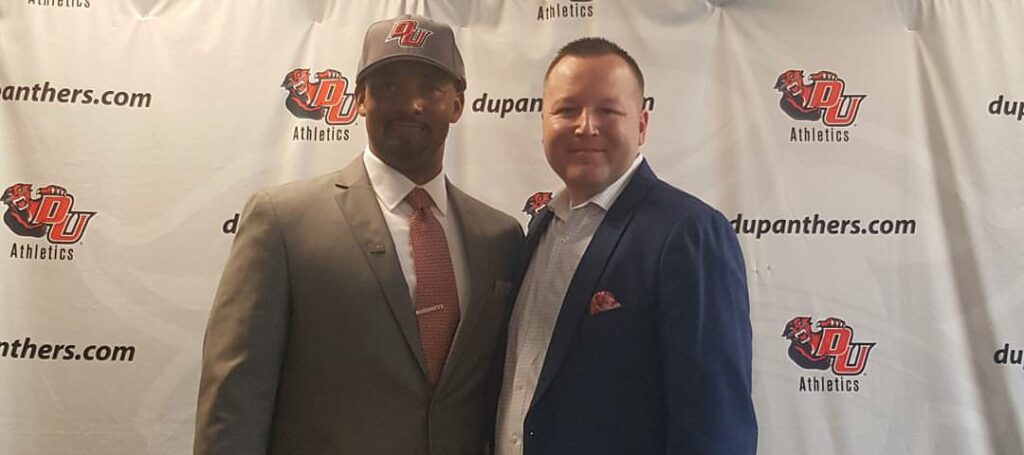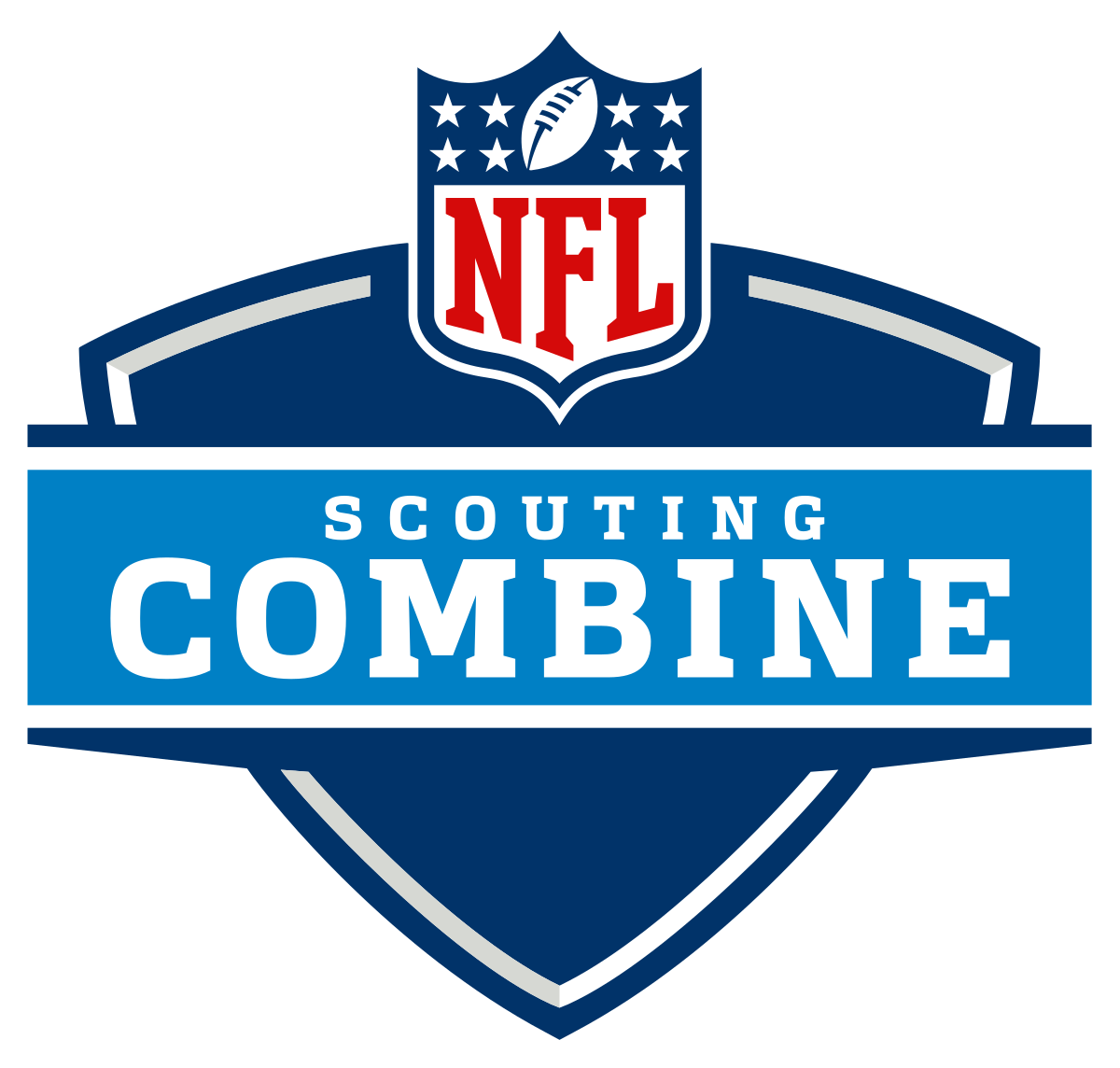
This years on-field drills will be televised in prime time so the schedule has been moved around accordingly.

This years on-field drills will be televised in prime time so the schedule has been moved around accordingly.

The simple answer is whenever he wants to or feels he needs to. A coach can negotiate his own contract and he can do all the other things that an agent helps with. College Football coaches are busy and we all have 24 hours in a day so the question comes does having an agent free up some time? Does the agent bring other value to the coach? Is having an additional set of eyes and ears as well as network valuable to the coach? In terms of other service the agent provides as well as just being a confidential sounding board can be a valuable asset to the coach.
If I would hire someone to cut my lawn, it is not the fact that I can’t do it, it is the fact I would rather do something else with my time. This is the same principle here, a coach can know the market place in terms of salaries, contracts, opening, and more but it might be helpful to have someone else there to do some of the work as well.
Also with College Football became even more of a big business on all levels it could be good to have someone to be your voice or even play the “bad cop” role with administration or whoever is in charge of the contracts. But also there is much more that coaches use their agent for then just getting a deal done and a contract negotiated.
The question I have gotten in the past is “what is the downside” and the answer is there really isn’t one, you as the coach empower the agent to negotiate or inquire about a job or other service so a reputable agent really could only increase your value, add more time back to you or enhance what you are already doing. Another thing I have heard is “I don’t want an agent to ruin the reputation that I have built so far in my career” and to that I say at the end of the day you are the boss the agent works for you so you guys should have communicated on how you as the coach want things done and it if it doesn’t work out that is when you terminate the relationship.
College Football is a 24 hour, 365 day of the year job not only with coaching, but then their is recruiting, camps, fund raising, team events,etc. Having someone else in your corner not only can give you back some of your valuable time, but can only help you in the long run.
By Justin VanFulpen
A lot of people believe that the NFL Draft is made up of the Power 5 college football conferences (ACC, Big 10, Big 12, SEC & Pac-12) in college football but that is not totally the case. If we take a look at the past 5 NFL Draft we see that there are a good amount of draft picks that come from other levels of college football.
2019 NFL Draft (254 picks):
53 Draft picks Non-Power 5 (20.8%)
16 of those 53 Non-FBS
Buffalo Bills DT Ed Oliver, Houston – 1st round 9th overall was earliest Non-Power 5 pick.
Houston Texans OT Tytus Howard, Alabama State- 1st round 23rd overall was earlies Non-FBS pick.
2018 NFL Draft (256 picks):
63 Draft picks Non-Power 5 (24.6%)
22 of those 63 Non-FBS
Buffalo Bills QB Josh Allen, Wyoming – 1st round 7th overall was earliest Non-Power 5 pick.
Philadelphia Eagles TE Dallas Goedert – 2nd round 49th overall was earliest Non-FBS pick.
2017 NFL Draft (253 picks):
43 Draft picks Non-Power 5 (16.9%)
15 of those 43 Non-FBS
Tennessee Titans WR Corey Davis, Western Michigan – 1st round 5thoverall was earliest Non-Power 5 pick.
Chicago Bears TE Adam Shaheen, Ashland – 2nd round 45th overall was earliest Non-FBS pick.
2016 NFL Draft (253 picks):
57 Draft picks Non-Power 5 (22.5%)
20 of those 57 Non-FBS
Philadelphia Eagles QB Carson Wentz, North Dakota State -1st round 2nd overall was earliest Non-Power 5 and Non-FBS pick.
2015 NFL Draft (256 picks):
56 Draft picks Non-Power 5 (21.8%)
20 of those 56 Non-FBS
Baltimore Ravens WR Breshad Perriman, UCF – 1st round 26th overall pick was the earliest Non-Power 5 pick.
San Francisco 49ers S Jaquiski Tartt, Samford – 2nd round 46th overall pick was the earliest Non-FBS pick.
2014 NFL Draft (256 picks):
84 Draft picks Non-Power 5 (32.8%)
24 of those 84 Non-FBS
Jacksonville Jaguars QB Blake Bortles, UCF – 1st round 3 pick overall was the earliest Non-Power 5 pick.
New England Patriots QB Jimmy Garoppolo, Eastern Illinois – 2nd round 62nd overall was the earliest Non-FBS pick.
2013 NFL Draft (254 picks):
88 Draft picks Non-Power 5 (34.6%)
29 of those 88 Non-FBS
Kansas City Chiefs OT Eric Fisher, Central Michigan – 1st round 1st overall pick was the earliest Non-Power 5 pick.
Atlanta Falcons CB Robert Alford, Southeastern Louisiana – 2nd round 60th overall was the earliest Non-FBS pick.
2012 NFL Draft (253 picks):
69 Draft picks Non-Power 5 (27.2%)
22 of those 69 Non-FBS
Kansas City Chiefs DT Dontari Poe, Memphis – 1st round 11th overall pick was the earliest Non-Power 5 pick.
St. Louis Rams WR Brian Quick, Appalachian State – – 2nd round 33rd overall was the earliest Non-FBS pick. (In 2012 Appalachian State was non FBS – they have moved to the FBS now)
So in the past 5 NFL Draft we see there was at least 1 first round pick from a Non-5 Power conference and in 2013 the first overall pick came from a Non-5 Power conference. In the past 4 NFL draft ever year there has been a 2nd round pick that was from a Non-FBS school.
So just remember if you are in a Power 5 conference there are other guys looking to get drafted just as high as you are and if you are not in a Power 5 conference it doesn’t matter if you can play football the NFL will find you.
By Justin VanFulpen
With the 2019 NFL Draft in the books here is the average amount of players drafted at each position over the past 5 years (2015-2019) and the highs and lows.
QB – Average amount drafted – 11.2 – High amount drafted 15 (2016) Low amount drafted 7 (2015)
RB– Average amount drafted – 22.0 – High amount drafted 26 (2017) Low amount drafted 20 (2015)
FB – Average amount drafted – 2.2 – High amount drafted 3 (2016,2015) Low amount drafted 1 (2019)
WR – Average amount drafted – 32.0 – High amount drafted 34 (2015) Low amount drafted 28 (2019)
TE – Average amount drafted – 13.0 – High amount drafted 18 (2015) Low amount drafted 9 (2016)
OT – Average amount drafted – 20.6 – High amount drafted 26 (2015) Low amount drafted 16 (2017)
OG – Average amount drafted – 14.2 – High amount drafted 18 (2015) Low amount drafted 10 (2018)
C – Average amount drafted – 6.2 – High amount drafted 8 (2018, 2016) Low amount drafted 5 (2015,2017, 2019)
DE – Average amount drafted – 23– High amount drafted 26 (2017, 2019) Low amount drafted 17 (2016)
DT – Average amount drafted – 20.4 – High amount drafted 22 (2016) Low amount drafted 18 (2015)
LB – Average amount drafted – 34.2 – High amount drafted 39 (2018) Low amount drafted 28 (2017)
CB – Average amount drafted – 31.8 – High amount drafted 34 (2017) Low amount drafted 29 (2018)
S – Average amount drafted – 19.0 – High amount drafted 23 (2017) Low amount drafted 15 (2015)
K – Average amount drafted – 1.6 – High amount drafted 3 (2017) Low amount drafted 0 (2015)
P – Average amount drafted – 2 – High amount drafted 4 (2018) Low amount drafted 0 (2017)

By Justin VanFulpen
In the football business one of the closely guarded secrets before the official list is released is who is getting invited to the NFL Combine. The NFL Combine is run by National Scouting and has become a televised event by the NFL Network. For more information about how the NFL Combine invites work you can check out my article from a year ago: NFL Draft: NFL Combine just part of the process.
Now that the 2019 NFL Draft is in the books we can look at the results. This year there were 337 players invited to the NFL Combine and their where 34 players that were drafted that did NOT go to the NFL Combine. Break down as far as rounds go:
1st round – 1 player
2nd round – 0
3rd round – 2 players
4th round – 1 player
5th round – 2 players
6th round – 12 players
7th round – 16 players
So 117 players that were invited to this year’s NFL Combine were not drafted. So the percentage of players that were drafted that were invited to the NFL Combine was 65%, so it is far from a guarantee if you are invited that you will get selected in the NFL Draft. Last year it was 64% of the players that were at the NFL Combine where drafted.
By Justin VanFulpen
College Football All-Star games are part of the pre-draft process that is more important then the NFL Combine and Pro Days because it is football and scouts can evaluate good on good players. The Senior Bowl is the best all-star game and one that all Senior prospects want to get invited to. Here is the amount of draft picks per all-star games.
Senior Bowl – 93
East-West Shrine Game – 31
NFLPA Bowl – 2
Tropical Bowl – 1
Getting invite to an all-star can help out a NFL Draft prospect rise his draft status if he takes advantage.
By Justin VanFulpen
As you might expect the current projected starting QB’s most are drafted in the 1st round. This does not include the five 1st round picks this year who as of right now go into training camp and pre-season as back-ups (Baker Mayfield, Sam Darnold, Josh Allen, Josh Rosen, Lamar Jackson). If those 5 QB’s start at some time then their would be 23 1st round starting QB’s or 71% of the NFL would be starting 1st round QB’s. (Josh Rosen would replace 1st round pick Sam Bradford in Arizona and Lamar Jackson would replace 1 round pick Joe Flacco).
If you look at all the QB’s currently in the NFL after the most is 32 QB’s that were undrafted and then second is 1st rounder with 31 QB’s being selected there. The round which has produced the lowest amount of current NFL QB’s is the 7th round were currently there is only 8 QB’s who were drafted there.